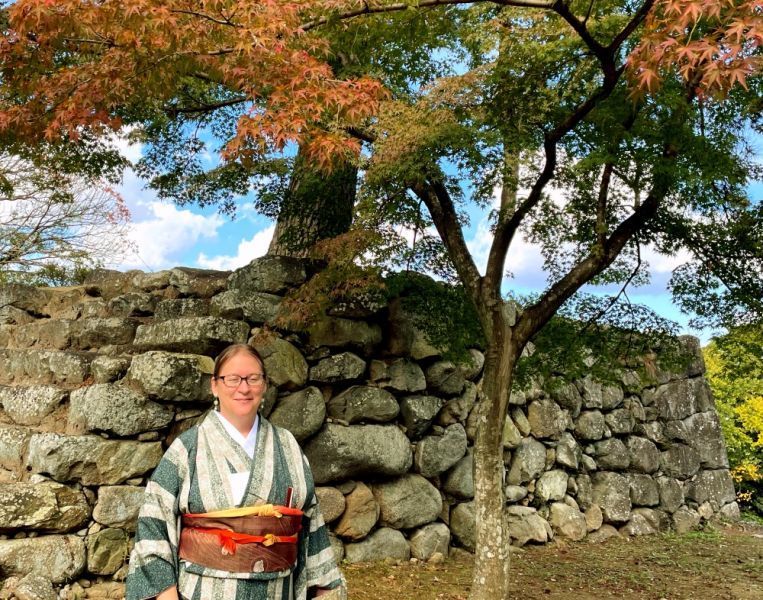Strolling in Living History in Matsusaka, Mie
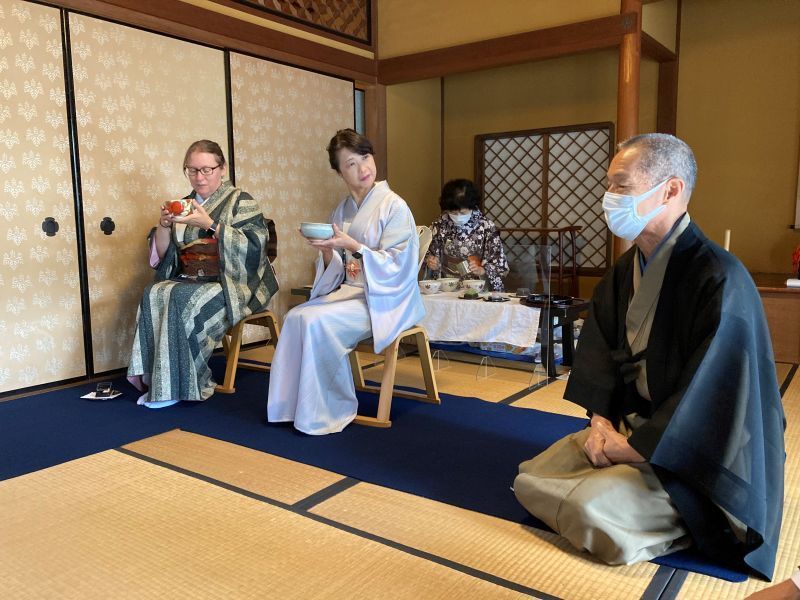
Matsusaka has a long history of being a merchant and castle town. One amazing way to become a part of living history in this lovely city is to wear a traditional kimono and explore at your own pace, seeing beautiful architecture, views from the castle ruins and even having a traditional tea ceremony in an unforgettable setting.
Written by Lauren Shannon
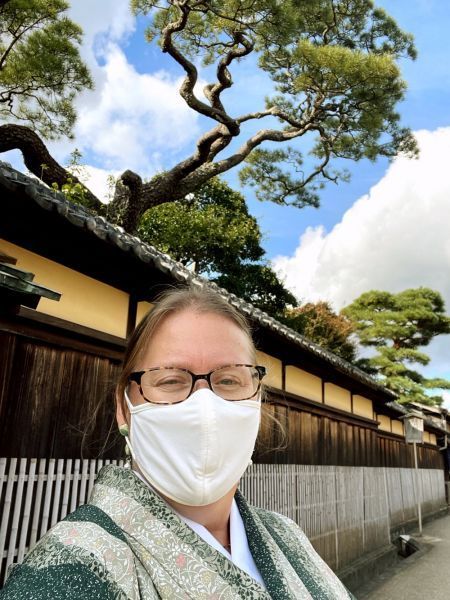
ABOUT MATSUSAKA
Matsusaka has a deep history as a commercial center. The ruins of the historic castle still rise over the city center, a reminder of Matsusaka’s past and a favorite spot to visit and enjoy events and activities for residents and visitors from across Japan and the world.
The city is filled with historic buildings and compelling stories from hundreds of years ago and one of the best ways to experience this area is to rent and wear traditional Kimono and yourself become a part of past and present coming together. Slow down and notice the details of traditional gardens and streets,, visit a part of the city where descents of the castle guards still live today and enjoy a green tea ceremony and traditional wagashi dessert inside a merchant residence dating back several centuries.
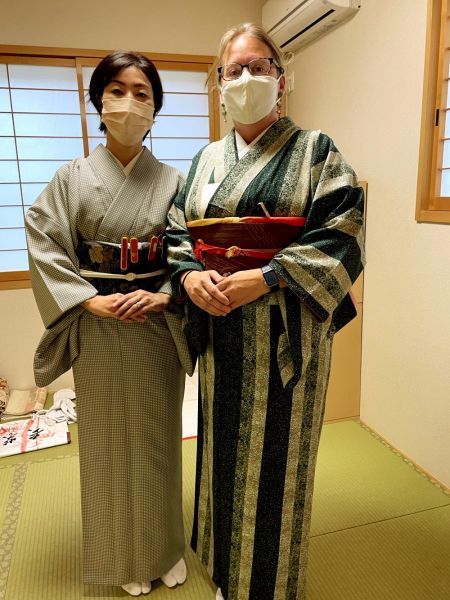
EXPLORING THE TOWN IN KIMONO
On the day of my visit I was so proud and pleased to be assisted in renting and wearing a kimono by an amazing, bilingual Kimono teacher, Ikesugi-san.
In busy tourist locations like Kyoto or Tokyo, many kimono rental shops are not so authentic and do not take the time to make sure your kimono experience is truly a lovely and memorable one. Here in Mie I had a chance to wear a Kimono that fit me perfectly, and was matched for the season, and experiences that I would have during my stay. My favorite color is green so I could not have been more happy with my lovely silk kimono in shades of cool greens with touches of the palest pink. Wearing Kimono is complicated to do yourself, so working with a teacher like Ikesugi-san or visiting a specialty shop that has a passion for kimono culture is the best way to experience this “living tradition” in silk and cotton.
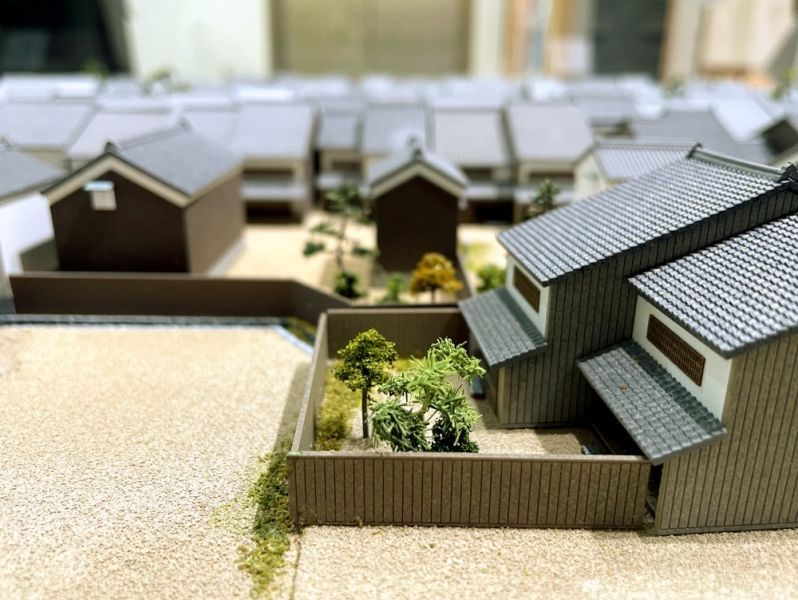
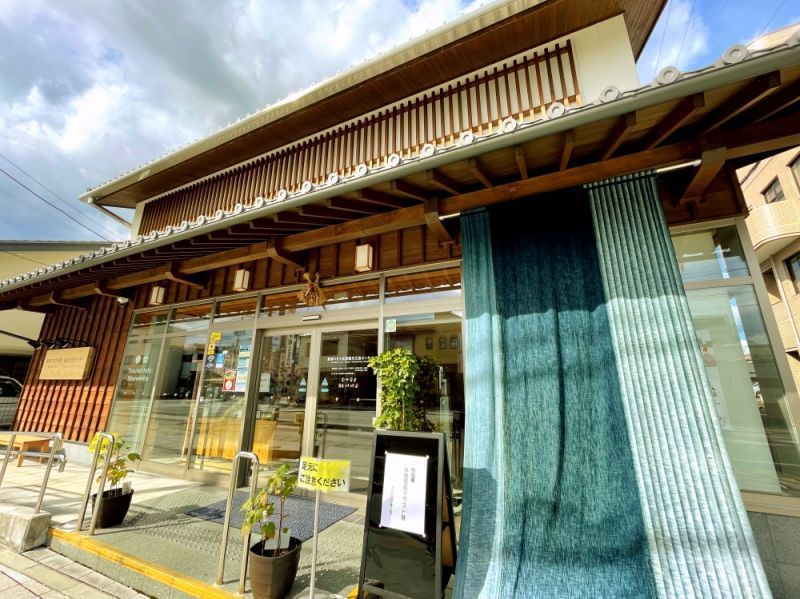
GOOD BEGINNINGS
Once you are wearing your Kimono the town is easy to stroll and explore. Starting off at the Matsusaka City Tourism Information center is one of the best ways to begin. On the first floor you can find a variety of information about sightseeing and places to visit, eat and explore in Matsusaka. This is also a nice shop selling souvenirs and handmade crafts to bring home.. The second floor is full of exhibits that explain the history of Matsusaka and a video you can watch that includes English subtitles.
Many wealthy merchants from Matsusaka made their living by selling cotton textiles in Edo (modern-day Tokyo). The Weaving in the area was famous even earlier Since around the 5th century. This made my Kimono experience even more rooted in history.
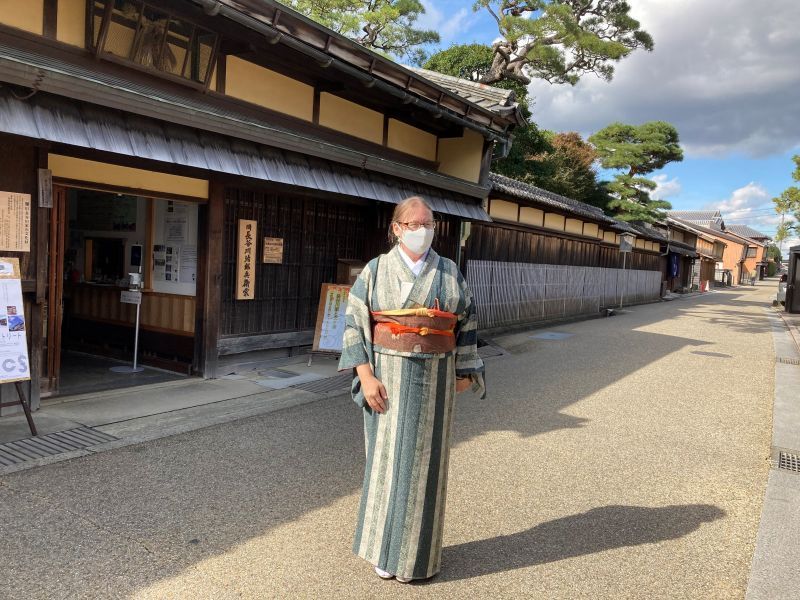
Historic Buildings in Matsusaka
There are many historic places you can visit during your stay, but from the visitors center it is just a short walkl to the Former Hasegawa Residence, the home of a wealthy textile merchant family.
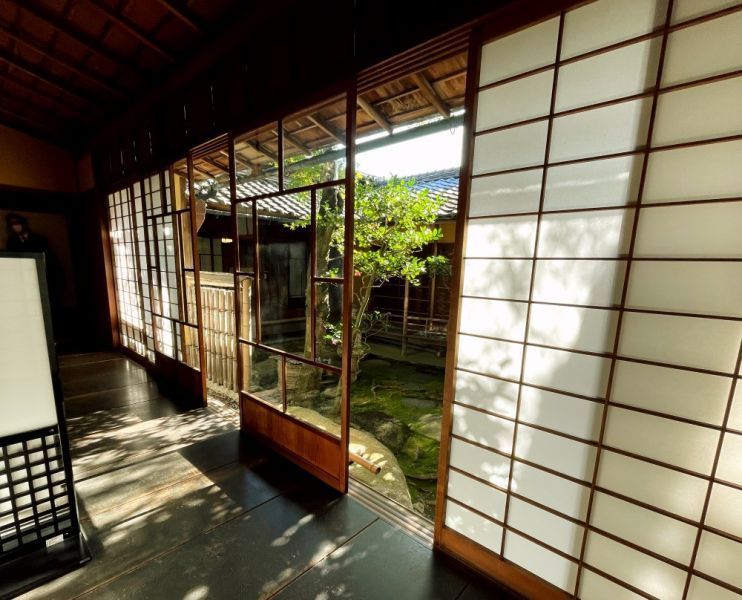
The light and shadow in the sliding doors at the Hasegawa House
The Hasegawa’s started their business in 1675 with shops in old Tokyo. With the money earned through the textile business, the family in Matsusaka enjoyed many luxuries.
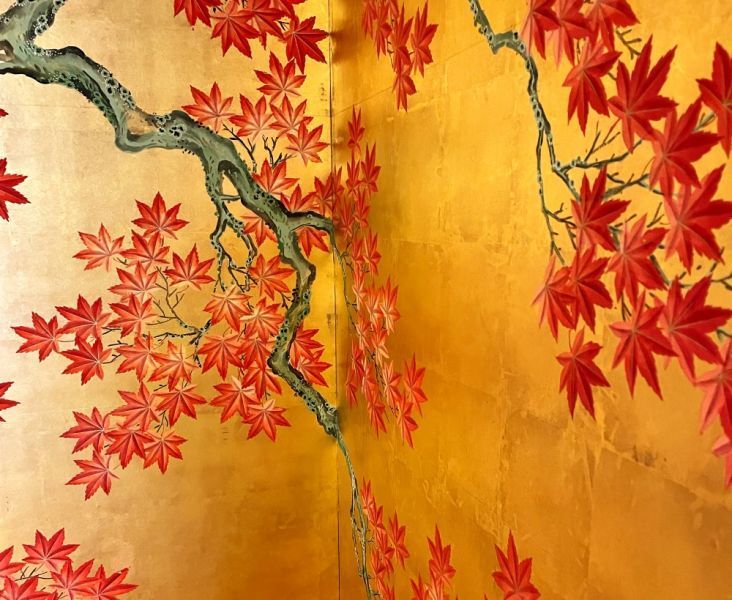
Hand-painted screen in the Former Hasegawa Residence
They collected art, wrote poetry, entertained many famous visitors and celebrated the seasons in the practice of Japanese tea ceremony.
LIVING HISTORY AND TEA EXPERIENCE
When you visit the building now, it is much more than a cold museum housing the artifacts of the past. There is a lush garden, demonstrations of weaving and you can come inside and enjoy a tea ceremony with delicious matcha and a wagashi seasonal dessert prepared by a tea master.
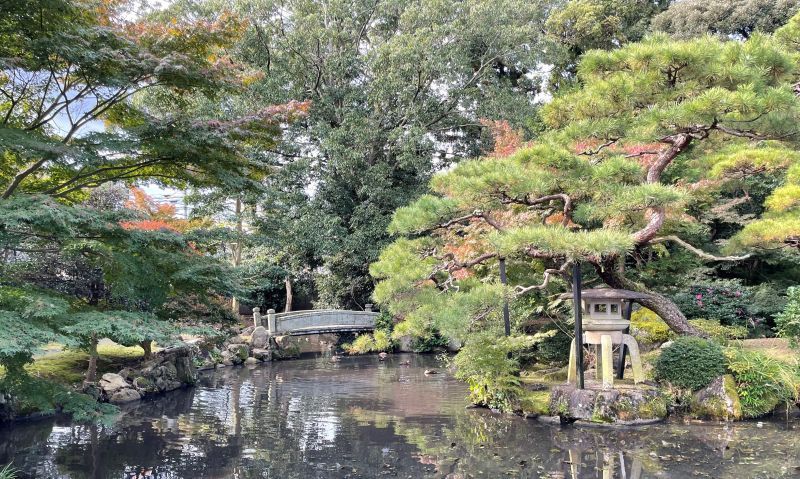
Path in the garden at the Hasegawa residence
The day I visited, I was thrilled to learn about tea from a celebrated tea ceremony teacher, Mr Gotou. His knowledge was amazing and his storytelling was charming in every way. He gave us a brief introduction about tea and also explained about the ceramics used in our tea experience. Then one of his lovely students prepared tea for us paired with a seasonal dessert.
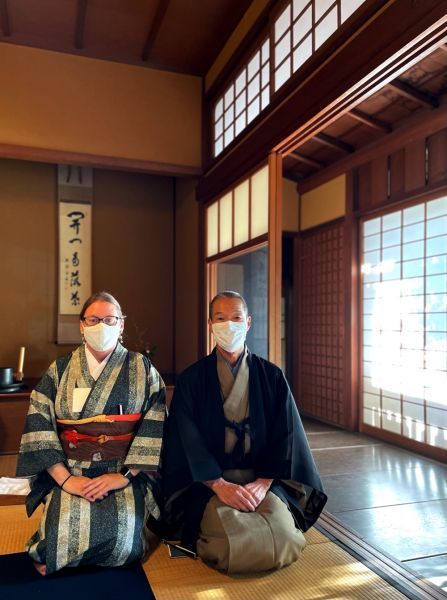
Inside the tea room with Tea Master, Mr. Gotou
Toshihiro Gotou, the president of Matsusaka City Tea Ceremony Association, inherited the tea ceremony culture of Ujisato Gamou, a warlord of the Warring States period, and promotes exchanges among various schools.
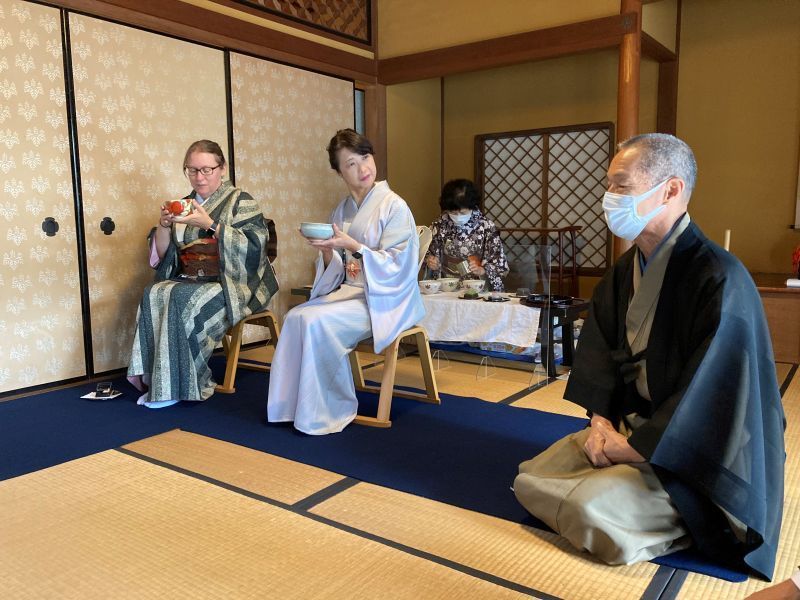
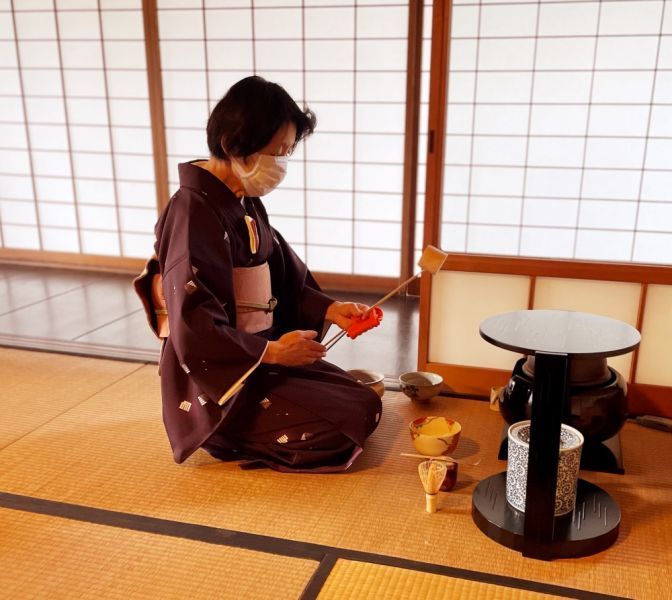
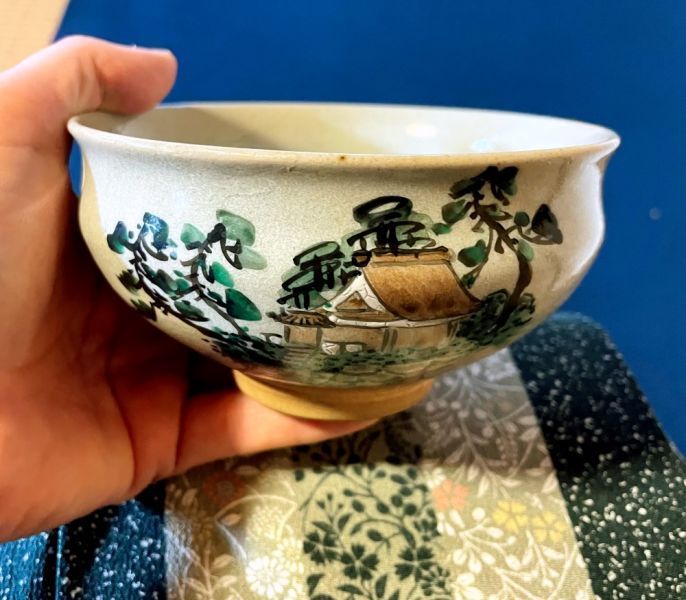
Enjoying my tea in a beautiful tea bowl or Chawan, while in my Kimono
In addition to the main building, weaving demonstration and tea room, you can visit the Kura, or warehouse on the property. A Kura is a building used for storage and made well to keep treasured belongings safe from theft, fire or other disasters.
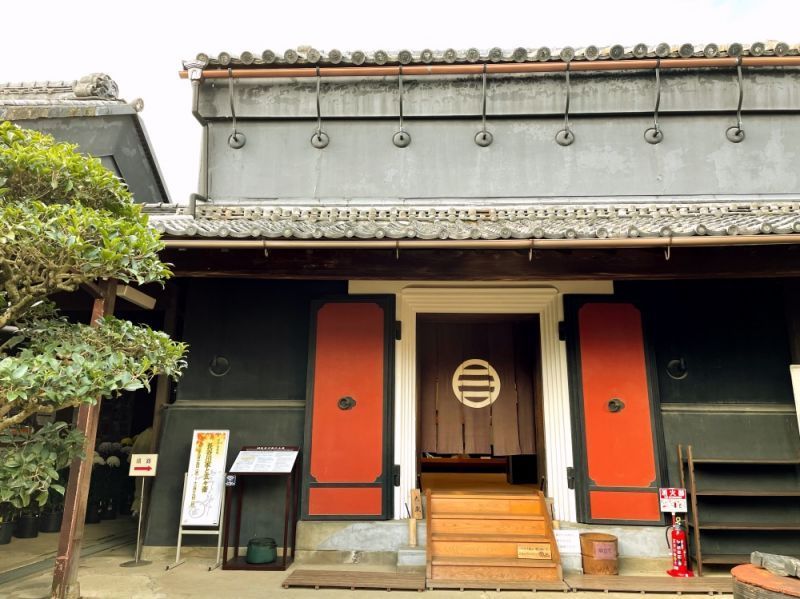
Special Kura, warehouse on the Hasegawa property
The Hasegawa’s had 5 different kura at one time and they used them to store antiques and artifacts, important documents and other family treasures. You can visit a small museum inside to learn more about daily life from the time period.
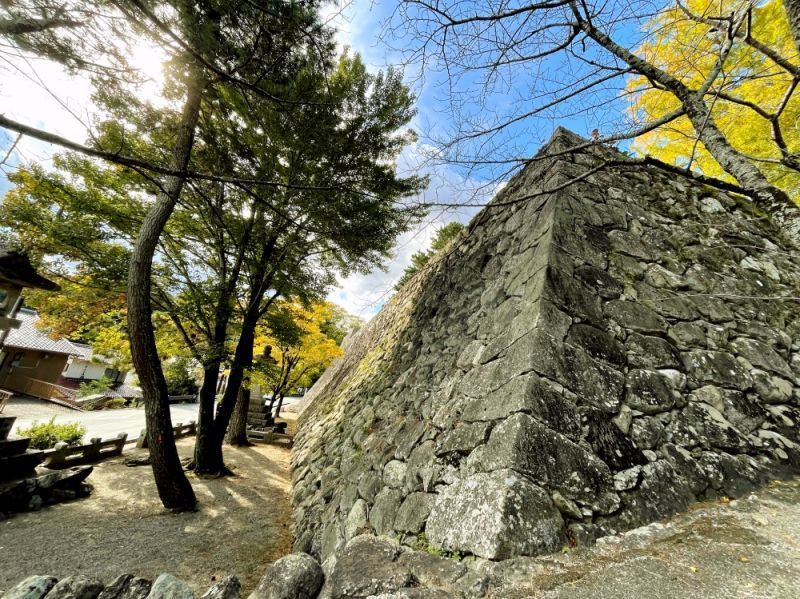
Visiting the Must-See castle grounds above the city
ONE OF JAPAN’S TOP 100 CASTLES
